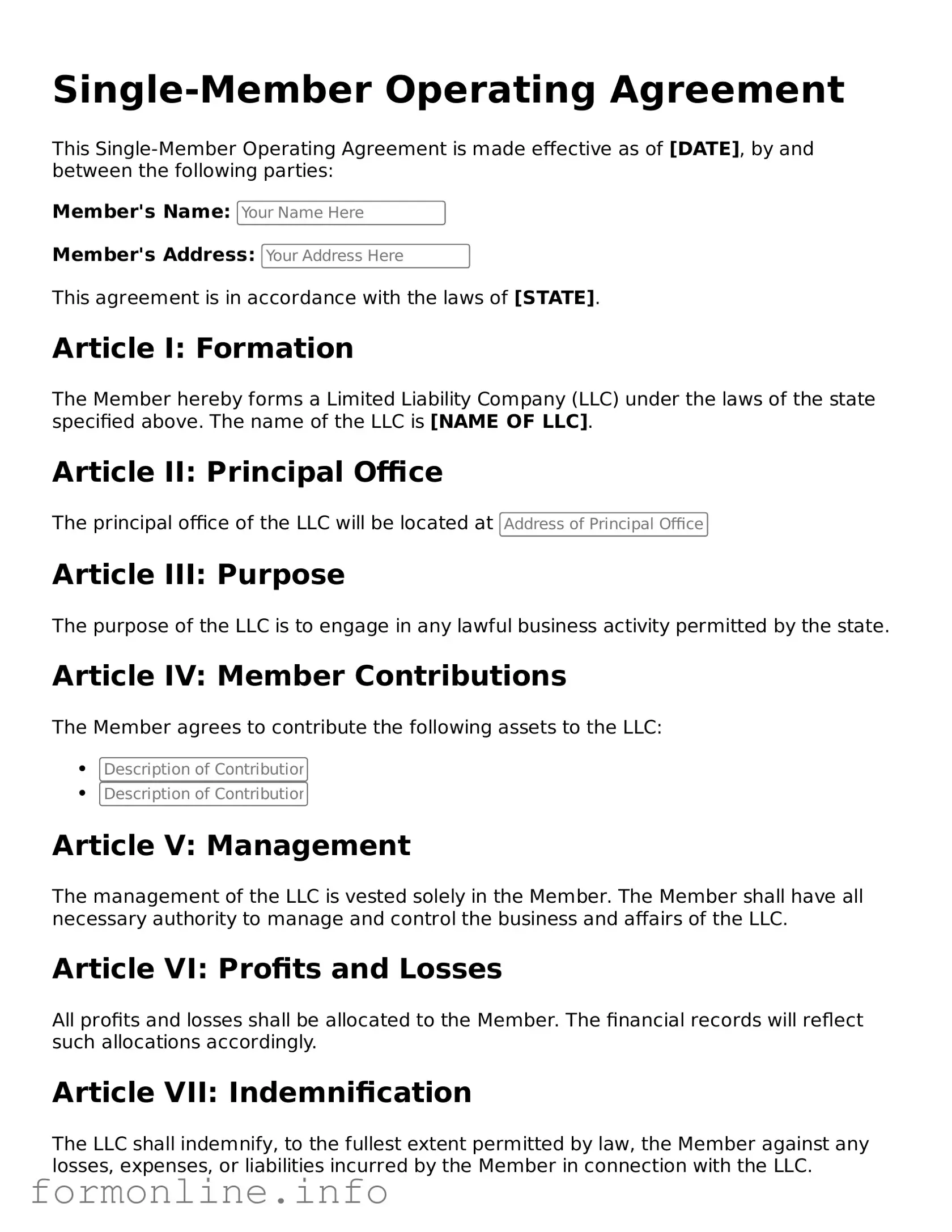A Sole Proprietorship Agreement is similar to a Single-Member Operating Agreement in that both documents outline the operational structure of a business owned by one individual. In a Sole Proprietorship, the owner has complete control over the business and its decisions, much like a single-member LLC. However, a Sole Proprietorship does not provide the same liability protection that an LLC offers. This distinction is crucial for individuals looking to separate their personal and business liabilities.
A Partnership Agreement, while designed for businesses with two or more owners, shares similarities with a Single-Member Operating Agreement in terms of outlining management roles and responsibilities. Both documents serve to clarify the expectations of the owners, though a Partnership Agreement must address the dynamics between multiple partners, including profit-sharing and decision-making processes, which are less complex in a single-member context.
An LLC Formation Document is a foundational document for establishing a Limited Liability Company. Like a Single-Member Operating Agreement, it outlines the structure and management of the business. However, the LLC Formation Document is typically filed with the state to officially create the LLC, while the Operating Agreement is an internal document that details how the LLC will operate, including rules for management and member roles.
A Buy-Sell Agreement is often utilized in multi-member LLCs, but it can also bear similarities to a Single-Member Operating Agreement in terms of addressing ownership transfer. Both documents can specify what happens if the owner decides to sell their interest or if they pass away. This ensures that the business can continue to operate smoothly, regardless of changes in ownership.
An Employment Agreement may also be compared to a Single-Member Operating Agreement, especially if the single member plans to hire employees. Both documents outline the terms of employment, responsibilities, and expectations. However, an Employment Agreement focuses specifically on the relationship between the employer and employee, while the Operating Agreement focuses on the management and operational structure of the business.
A Non-Disclosure Agreement (NDA) is relevant for single-member LLCs, particularly when sensitive information is involved. While an NDA protects confidential information shared with third parties, a Single-Member Operating Agreement may include clauses about confidentiality regarding the business's internal operations. Both documents aim to protect the interests of the business, albeit in different contexts.
Understanding the various documents that govern business operations is essential for LLCs and their owners. An important component within this framework is the Operating Agreement form, which not only clarifies the management structure but also delineates the rights and responsibilities of members, thus helping prevent disputes and ensuring organized management.
A Corporate Bylaws document serves a similar purpose for corporations as a Single-Member Operating Agreement does for LLCs. Both documents outline the governance structure and operational procedures. However, Corporate Bylaws are specific to corporations and include details about board meetings, officer roles, and shareholder rights, while the Operating Agreement focuses on the single-member LLC's management and operational guidelines.
A Franchise Agreement can also be related to a Single-Member Operating Agreement in that both establish the terms under which a business operates. A Franchise Agreement details the relationship between the franchisor and franchisee, including operational guidelines, fees, and support. In contrast, a Single-Member Operating Agreement focuses on the internal workings of the LLC, emphasizing the rights and responsibilities of the single member.
